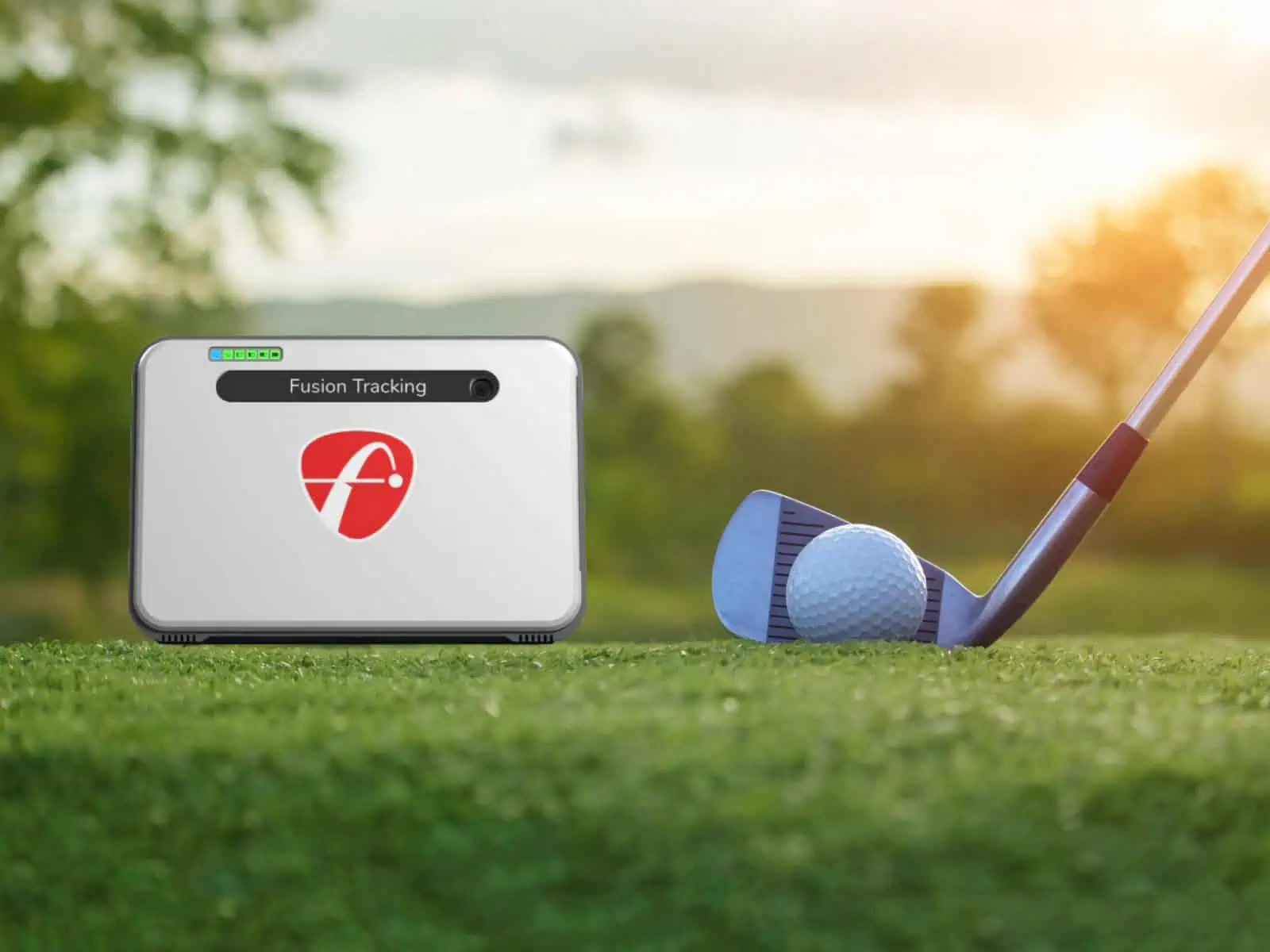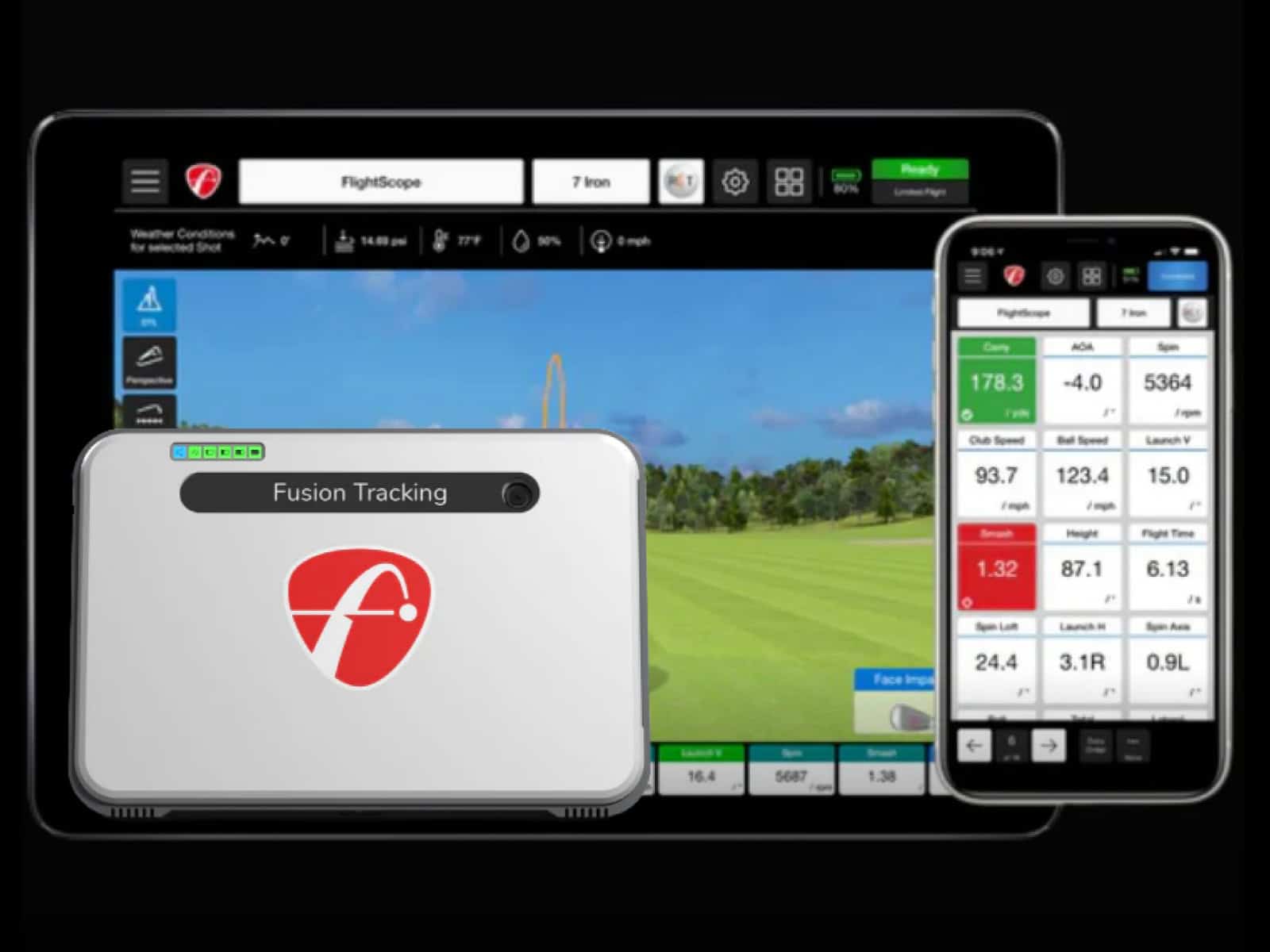In the world of golf, perfecting your swing is the key to unlocking your full potential on the course. With the advent of golf simulators, players now have access to cutting-edge technology that can help them analyze and improve their technique like never before.
At the heart of these simulators are swing-tracking cameras, which capture every detail of your swing and provide valuable insights into your performance.
In this ultimate guide, we will take a look at the world of swing tracking cameras for golf simulators, explore the top models and configurations on the market and provide expert tips and advice on how to make the most of this incredible technology.
Understanding Swing Recording Cameras
Swing recording cameras offer a fusion of technology and sport, a blend that’s reshaping golf training. These cameras offer more than just video playback; they provide a gateway to in-depth swing analysis.
The Anatomy of Swing Recording Cameras
At first glance, a swing recording camera might look similar to any high-quality video camera, but it’s what’s on the inside that counts.
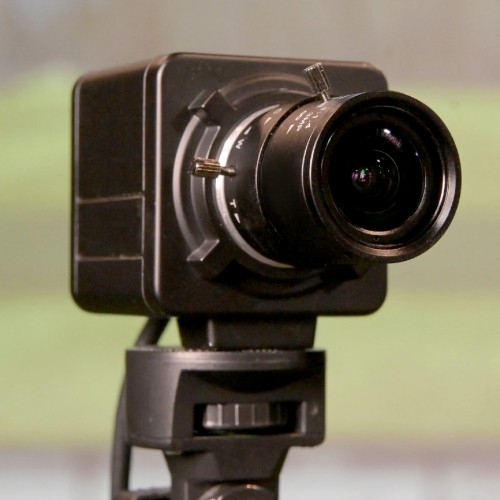
Equipped with sensors tuned to capture rapid movements, these cameras dissect your swing into hundreds, sometimes thousands, of frames per second. This level of detail is crucial if you want to catch the fleeting moments that define a swing’s success or areas needing improvement.
High-Speed vs. High-Resolution: Choosing the Right Camera
High-speedcameras excel in capturing the rapid motion of a golf swing, ensuring no critical moment is missed. In contrast, high-resolution cameras provide the sharpness necessary to analyze subtle aspects of the swing, such as the grip and the club’s position relative to the ball at impact.
Modern golf cameras combine the two features to provide the best swing analysis possible. A great example is Uneekor’s Golf Swing Cameras, which operate at over 160 FPS at a resolution of up to 1440 x 1880.
The Role of Frame Rate in Capturing the Perfect Swing
Frame rate, measured in frames per second (fps), is pivotal in swing recording technology. A higher frame rate means more images are captured every second, offering a more detailed breakdown of the swing.
This granularity is vital for coaches and players alike to identify and correct even the most minor flaws, making frame rate a critical consideration in choosing the right swing recording camera.
When looking for a camera for your golf sim, try to get the highest framerate without sacrificing resolution. A 1080 resolution with a framerate of over 100 FPS is a good combination of clarity and speed.
Key Features of Top Swing Recording Cameras
It’s worth noting that not all swing cameras are created equal. Certain features elevate a camera from merely good to exceptional, making it a crucial tool in your quest for perfection. Let’s explore these must-have features and how they contribute to effective swing analysis.
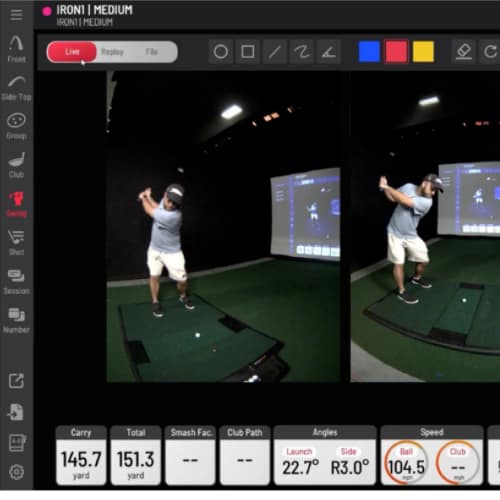
Must-Have Features for Effective Swing Analysis
A top-tier swing recording camera must combine high frame rates, superior resolution, and low-light performance. These features ensure that every minute detail of the swing, from the grip to the follow-through, is captured with utmost clarity.
High Frame Rates
This allows the camera to capture more frames per second, providing a smoother and more detailed playback of the swing. It’s essential for identifying quick, subtle movements that could make or break a shot.
Superior Resolution
High-resolution cameras offer clearer images, making it easier to analyze the finer points of the swing, such as club position and body alignment.
Low-Light Performance
Golf simulators are often used indoors, where lighting conditions may not be ideal. Cameras that perform well in low light ensure consistent quality, regardless of the environment.
Comparing Popular Swing Recording Camera Models
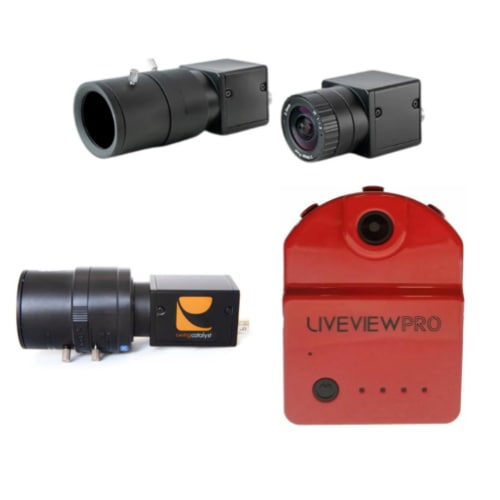
When selecting a swing recording camera, it’s beneficial to compare models based on the features mentioned above. Brands like Uneekor, Swing Catalyst and Live View lead the pack, offering a range of models that cater to various needs and budgets.
A side-by-side comparison can help identify which camera offers the best combination of frame rate, resolution, and low-light performance for your specific setup. Feel free to read our detailed reviews of golf cameras you can use with your simulator.
Innovations and Trends in Camera Technology for Golf Simulators
The future of swing recording cameras is bright, with continuous advancements in sensor technology and software analytics. Innovations such as 3D motion capture and integration with AI-driven analysis software are on the horizon.
These technologies promise even more detailed and accurate swing analysis, opening new doors for training and improvement.
Setting Up Your Swing Recording System
Integrating swing recording technology into your golf simulator is a great addition. Let’s go through the setup process, ensuring that your system is calibrated for precision and tailored to your unique training needs.
However, one crucial element that often gets overlooked is proper lighting. For golfers who crave not only precision but also a visually appealing and immersive golfing experience, optimizing your golf simulator lighting is essential.
Step-by-Step Installation
Setting up your swing recording system starts with selecting the right location. Ideally, this space should be indoors, where environmental factors like wind and lighting can be controlled. Follow these steps to ensure a smooth installation:
- Mount the Camera: Position the camera at a height and angle that captures the full arc of the swing. This often means placing it at least 10 feet back from the tee and slightly elevated.
- Connect to the Computer: Use USB, Ethernet or wireless connections to link the camera to your computer system.
- Install the Software: Load the swing analysis software onto your computer, ensuring it’s compatible with your camera model.
Calibration and Configuration for Accurate Data Capture
Calibration is critical to ensure the data captured reflects your actual swing mechanics. This process involves the following:
Setting the Frame Rate and Resolution
Adjust these settings based on your camera’s capabilities and your specific analysis needs.
Aligning the Camera
Ensure the camera’s field of view is properly aligned with the hitting area to capture the swing accurately.
Testing and Adjusting
Take a few test swings to verify that the system captures the data accurately and adjust the setup as necessary.
Tips for Optimal Camera Placement and Angles
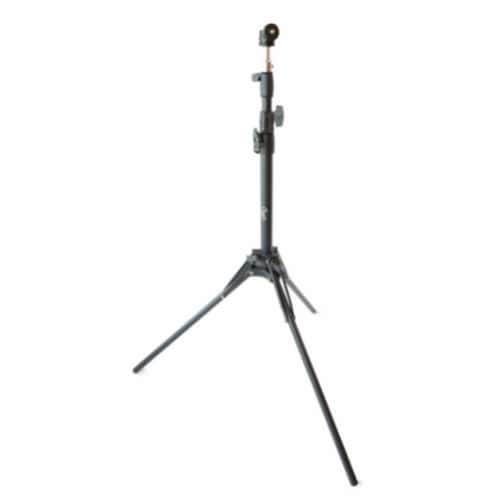
The placement of your swing recording camera can significantly impact the quality of the data collected. Consider these tips for optimal placement:
- Multiple Angles: If possible, use more than one camera to capture different angles of the swing, such as side and overhead views.
- Avoid Backlighting: Position the camera away from direct light sources, which can cause glare and affect image quality.
- Stable Mounting: Ensure the camera is securely mounted to the wall or on a tripod to avoid any movement or vibration that could blur the images.
Analyzing and Interpreting Swing Data
Combined with the data you get through your golf launch monitor, the videos you capture with your swing cameras can help improve your understanding any flaws that plague your game and provide hints to fix them.
Identifying Common Swing Flaws through Video Analysis
The visual feedback from your swing recording system is invaluable. Slow-motion playback allows you to observe crucial elements like:
- Posture and Alignment: Ensuring your setup is conducive to a powerful and accurate swing.
- Grip Consistency: Checking that your grip is consistent throughout the swing, which can greatly influence shot accuracy.
- Follow-Through and Finish: Analyzing the completeness of your swing, which can indicate balance and control.
Utilizing Swing Data to Improve Your Game
Interpreting the data and visuals is just the beginning; applying these insights to your training is where real improvement happens. To remedy any issues, you may consider the following:
- Targeted Drills: Based on your data, focus on specific aspects of your swing with drills designed to address your weak points.
- Feedback Loop: Use the immediate feedback from each swing to make incremental adjustments, reinforcing muscle memory.
- Professional Analysis: Sometimes, an expert eye can see what we miss. Consider sharing your data and videos with a coach for personalized advice.
This analytical approach, powered by swing recording technology, transforms practice sessions into highly effective improvement opportunities, ensuring every minute spent training brings you closer to your goals.
Integrating Cameras with Golf Simulation Software
The seamless integration of swing recording cameras with golf simulation software is a pivotal step in maximizing the effectiveness of your golf training setup.
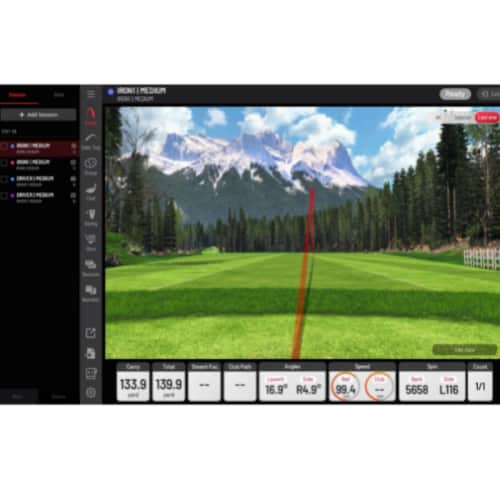
Ensuring Compatibility Between Cameras and Simulation Software
Compatibility is the cornerstone of a smooth-running golf simulator system. Here’s how to ensure your camera and software speak the same language:
Check Software Requirements – Before investing in a camera, verify the technical requirements of your golf simulation software. Compatibility lists are often provided by the software manufacturer.
Software Updates – Keep both your camera firmware and simulation software up-to-date. Software updates often include enhancements for better camera integration and performance improvements.
Enhancing the Simulator Experience with Real-Time Feedback
Real-time feedback transforms a standard practice session into an interactive learning experience.
After each swing, the software presents a detailed swing analysis based on the camera’s data, offering instant feedback on what went right or wrong.
Moreover, many software packages include tools like swing overlays and side-by-side comparisons, allowing you to visually benchmark your swings against ideal parameters or previous attempts.
Advanced Applications and Future Possibilities
As swing recording technology continues to evolve, its applications extend far beyond the traditional golf simulator setup, promising exciting advancements for golf training and other fields.
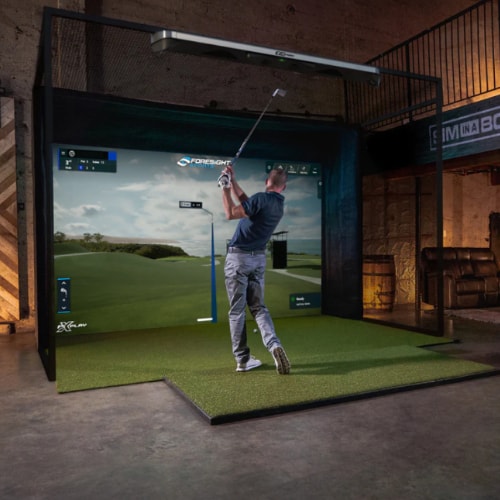
For golf enthusiasts who are inspired by the latest advances in swing recording and analysis technology and are eager to apply these insights to their own training regimen, embarking on a journey to constructing a home golf simulator could be the next step.
The Future of AI and Machine Learning in Swing Analysis
Artificial Intelligence (AI) and Machine Learning (ML) stand at the forefront of the next leap in swing recording technology. Here’s what the future might hold:
- Automated Swing Diagnostics: AI algorithms can identify and diagnose swing flaws without human intervention, providing instant feedback to players.
- Personalized Training Programs: Machine learning can analyze your swing data over time to create highly personalized training programs that adapt to your progress.
- Predictive Performance Analytics: AI could predict potential injuries or performance plateaus, allowing you to adjust your training before issues arise.
Emerging Technologies and What They Mean for Golf Enthusiasts
The integration of emerging technologies with swing recording cameras is set to redefine the golf training landscape. We should expect to see some of the following technologies used in swing recording and analysis in the near future:
- Virtual Reality (VR) and Augmented Reality (AR): Immersive technologies could allow you to practice in simulated environments, receiving real-time swing analysis overlaid in your field of view. This is already starting to happen in virtual golf, and it’s only going to get better from here.
- Wearable Technology: Integrating wearables such as smartwatches with swing recording systems can provide more comprehensive data, capturing everything from heart rate to muscle activity during a swing.
- Internet of Things (IoT): IoT devices could collect environmental data, such as weather conditions, to analyze how external factors affect swing mechanics and ball flight.
Frequently Asked Questions
In this section, we will address some of the most common questions related to swing recording technology and its application in golf training. These FAQs are designed to clarify any uncertainties and provide quick, straightforward insights into the use and benefits of swing recording cameras.
Can swing recording cameras be used outdoors, or are they limited to indoor simulators?
Swing recording cameras are versatile and can be used in both indoor and outdoor settings. However, when used outdoors, it’s important to consider environmental factors such as lighting and weather conditions, which might affect the camera’s performance.
What makes swing recording cameras different from standard video cameras?
Swing recording cameras are specifically designed for analyzing fast, intricate movements. They typically offer higher frame rates and specialized software for detailed swing analysis, setting them apart from standard video cameras.
How often should I calibrate my swing recording system for accurate data?
Regular calibration is key to maintaining accuracy. It’s recommended to calibrate your swing recording system whenever you make changes to the setup or at least once every few months to ensure consistent performance.
What is the learning curve associated with using swing recording cameras for analysis?
The learning curve can vary based on the complexity of the system and the user’s technical proficiency. However, many modern swing recording systems are designed with user-friendly interfaces and come with comprehensive guides to help users get started.
Are swing recording cameras suitable for golfers at all skill levels?
Absolutely. Swing recording cameras provide valuable insights for golfers of all skill levels, from beginners looking to understand the basics of their swing to advanced players fine-tuning their techniques.
Final Thoughts
As we conclude this ultimate guide to swing tracking cameras for golf simulators, it’s clear that these devices have revolutionized the way golfers approach their game.
By providing detailed analysis and instant feedback, swing tracking cameras offer unprecedented insight into every aspect of your swing.
If you’re looking for a reliable swing speed analyzer to help you improve your game, check out our comprehensive guide on golf swing speed analyzers that have been thoroughly tested and reviewed.
Remember to make the most of your swing tracking camera by setting clear goals, practicing regularly, and staying open to feedback and adjustment. With dedication and the right tools at your disposal, there’s no limit to how far you can go in this incredible sport.
Thanks for reading!



